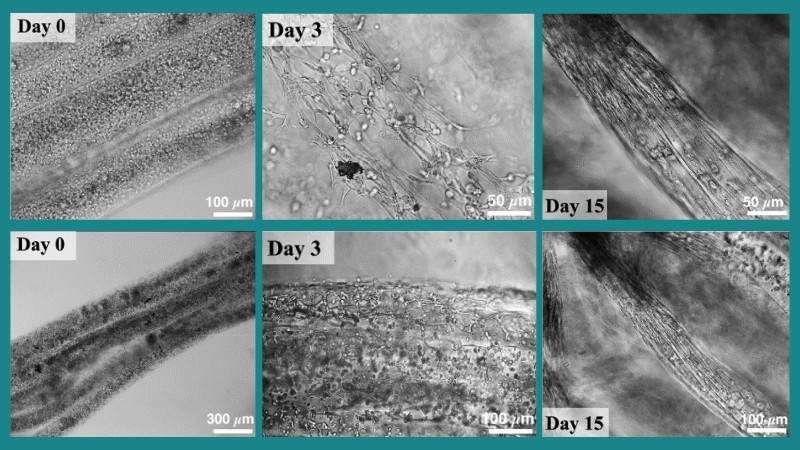Featured image courtesy of Costantini et al. (2021).
Even though skeletal muscle can quickly regenerate minor injuries, a traumatic insult like volumetric muscle loss significantly impairs muscle function. Since skeletal muscle tissue is imperative for all voluntary motor functions as well as respiration, restoring functionality in clinical scenarios remains an important therapeutic need. Skeletal muscle regeneration is a promising, but challenging, avenue of research aimed at restoring muscle functionality. Biomaterials engineered from regenerative hydrogels is a promising new method geared towards solving the challenges of skeletal muscle restoration. This publication review highlights the latest advancements in skeletal muscle tissue engineering.
Biofabricating murine and human myo-substitutes for rapid volumetric muscle loss restoration
In this article, Costantini et al. (2021) presented a solution to an important challenge of skeletal muscle tissue engineering. Using a microfluidic wet-spinning system, they were able to generate a myo-substitute from cell-laden hydrogel microfibers. This novel approach addresses the issue of engineering skeletal muscle on a small scale as well as its suitability for treating volumetric muscle loss in vivo. The effectiveness of the myo-substitute was tested in vitro and in vivo. With the in vivo assessments, contractile performance was measured in mice using our 305B muscle lever system. This system enabled the researchers to stimulate contraction of the peroneal nerve and determine the force-frequency relationship of different isometric contractions. The results of their study indicated that the engineered skeletal muscle generated more force than the untreated control. They demonstrated that not only can the myo-substitute generate significant force, but it can guide cell differentiation and myobundle formation while supporting vascularization and construction of neuromuscular junctions. Overall, this is a promising and novel approach that lays the groundwork for future scaling of tissue engineering to larger animal models and eventually to clinical models.
Methacrylic acid-based hydrogels enhance skeletal muscle regeneration after volumetric muscle loss in mice
In this article, Carleton et al. (2021) investigated a treatment for volumetric muscle loss using two different methacrylic-acid (MAA) hydrogels: MAA-polyethylene glycol (MAA-PEG) and MAA-collagen. Since MAA has regenerative effects, the researchers hypothesized that MAA hydrogels will promote muscle regeneration as well as new blood vessel and nerve formation. A volumetric muscle loss injury on mice was performed in the tibialis anterior (TA) so that the MAA hydrogels could be evaluated for their ability to restore muscle function. For in vivo functional testing, our 806D rat apparatus was used to hold the animal model, with the paw fixed to our 301C system. Muscle stimulation was done using our 701C electrical stimulator. The results show the successful regeneration of muscle fiber size and force production with the MAA-collagen hydrogel plus increased vascularization and innervation. The MAA-PEG hydrogel was able to increase vascularization but not innervation. The MAA collagen hydrogel exhibited several advantages over the MAA-PEG hydrogel that makes the collagen hydrogel a promising clinical therapeutic to repair muscle tissue after volumetric muscle loss injuries.




